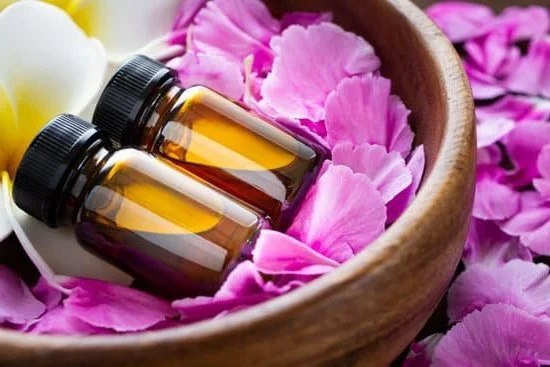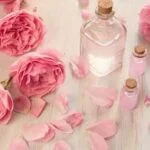Are you wondering, “can you put lime in an aromatherapy diffuser?” Aromatherapy diffusers are popular devices used to disperse essential oils into the air, creating a pleasant and therapeutic atmosphere. These diffusers come in various types, each serving different purposes, from promoting relaxation to alleviating congestion. Essential oils are commonly used in aromatherapy diffusers for their aromatic and healing properties, making them a go-to choice for many seeking natural remedies for various ailments.
Aromatherapy diffusers are designed to enhance the effects of essential oils by dispersing their molecules into the air, allowing them to be easily inhaled or absorbed through the skin. The different types of diffusers include ultrasonic, nebulizing, heat, and evaporative diffusers, each functioning in unique ways to release the oils into the surrounding environment. Whether you’re looking to create a calming ambiance at home or alleviate symptoms of certain conditions, aromatherapy diffusers can cater to various needs.
When choosing essential oils for use in an aromatherapy diffuser, it’s crucial to consider their safety and potential benefits. Certain essential oils are known for their soothing or energizing properties and can be used alone or in combination with others to achieve specific therapeutic effects.
However, precautions must be taken when using essential oils in diffusers as some may cause adverse reactions if not diluted properly. In the following sections, we’ll delve deeper into the types of essential oils safe for use in aromatherapy diffusers and discuss precautions that should be observed when using these potent substances.
Types of Aromatherapy Diffusers
When it comes to aromatherapy, the type of diffuser used to disperse essential oils into the air plays a crucial role in determining the overall experience. There are several types of aromatherapy diffusers available, each with its own unique features and benefits.
Ultrasonic Diffusers
Ultrasonic diffusers use electronic frequencies to create vibrations that break down essential oils into microparticles, which are then dispersed into the air as a fine mist. These diffusers also act as humidifiers, adding moisture to the air. They are ideal for larger spaces and provide the added benefit of improving air quality.
Heat Diffusers
Heat diffusers utilize a heat source, such as a candle or electric element, to evaporate essential oils into the air. While these diffusers are simple and inexpensive, they can alter the chemical composition of certain essential oils and may not be suitable for therapeutic purposes.
Nebulizing Diffusers
Nebulizing diffusers work by breaking down essential oils into a concentrated stream of particles that are released into the air. They do not require water or heat, making them ideal for preserving the therapeutic properties of the essential oils. Nebulizing diffusers are often recommended for experienced users who want maximum aroma and therapeutic benefits.
Evaporative Diffusers
Evaporative diffusers operate by allowing airflow to disperse essential oil molecules into the surrounding environment. These diffusers use a fan or natural evaporation to release the aroma of essential oils. While they are easy to use and cost-effective, they may not provide as strong of an aroma as other types of diffusers.
In choosing a diffuser, consider factors such as room size, desired intensity of aroma, maintenance requirements, and personal preferences in terms of aesthetics and functionality. Understanding how different types of aromatherapy diffusers work can help you make an informed decision when selecting one for your home or workspace. Each type offers its own set of advantages and considerations, so take the time to explore your options before making a purchase.
Essential Oils Safe for Diffusers
When it comes to using essential oils in aromatherapy diffusers, it’s important to choose oils that are safe and beneficial for this purpose. Here are some essential oils that are not only safe but also provide a range of benefits when used in diffusers.
Lavender Essential Oil
Lavender essential oil is one of the most popular oils used in aromatherapy diffusers. It is known for its relaxing and calming properties, making it ideal for promoting better sleep and reducing stress and anxiety. The gentle floral scent of lavender can create a soothing atmosphere in the home or office.
Peppermint Essential Oil
Peppermint essential oil is another safe option for use in aromatherapy diffusers. Its invigorating and refreshing aroma can help to boost energy levels and improve concentration. Peppermint oil is also known for its ability to alleviate headaches and sinus congestion, making it a versatile choice for diffuser use.
Tea Tree Essential Oil
Tea tree essential oil has powerful antimicrobial properties, making it a great choice for promoting a clean and fresh environment when used in a diffuser. It can help to purify the air and reduce airborne bacteria, viruses, and mold spores. Additionally, tea tree oil is often used to support respiratory health.
These are just a few examples of essential oils that are safe and beneficial for use in aromatherapy diffusers. When selecting oils for your diffuser, consider the specific benefits you want to achieve and choose oils that align with your preferences and needs.
Precautions When Using Essential Oils
When using essential oils in an aromatherapy diffuser, it is crucial to understand the importance of diluting the oils and the potential risks associated with using undiluted oils. Essential oils are highly concentrated plant extracts that can be too potent for direct inhalation or skin application. Therefore, proper dilution is necessary to ensure safety and effectiveness when using essential oils in a diffuser.
Here are some precautions to keep in mind when using essential oils in an aromatherapy diffuser:
- Always dilute essential oils: Undiluted essential oils can be too powerful and may cause adverse reactions such as skin irritation or respiratory issues. Diluting essential oils with a carrier oil like jojoba, coconut, or almond oil can help reduce the potency of the oil and make it safer for use in a diffuser.
- Avoid prolonged exposure: While using a diffuser, it’s important to limit the duration of exposure to essential oils. Prolonged inhalation of concentrated essential oils may lead to headaches, dizziness, or nausea. It is recommended to use the diffuser intermittently rather than continuously for long periods.
- Consult with a healthcare professional: If you have any underlying health conditions or are pregnant or breastfeeding, it’s advisable to seek advice from a healthcare professional before using essential oils in a diffuser. Some essential oils may not be suitable for certain individuals due to their potential effects on hormone levels or other health concerns.
Can You Put Lime in an Aromatherapy Diffuser
Lime essential oil is a popular choice for aromatherapy enthusiasts due to its refreshing and invigorating citrus scent. Many people enjoy using lime essential oil in their aromatherapy diffusers as it can help uplift their mood, reduce stress, and promote mental clarity. However, it is important to use caution when considering whether to put lime in an aromatherapy diffuser.
When using lime essential oil in an aromatherapy diffuser, it’s crucial to ensure that the oil is 100% pure and natural. Synthetic or adulterated oils may contain harmful chemicals that can be released into the air when diffused, posing potential health risks. Additionally, some individuals may have sensitivities or allergies to certain essential oils, so it’s advisable to perform a patch test before using lime essential oil in a diffuser.
While there are numerous benefits of using lime essential oil in an aromatherapy diffuser, such as its ability to promote feelings of positivity and boost energy levels, it’s equally important to exercise caution and moderation. Due to its potent nature, only a few drops of lime essential oil should be added to the diffuser at a time. Overexposure to the scent of lime or any other essential oil can lead to adverse effects such as headaches or respiratory discomfort.
| Lime Essential Oil Benefits | Caution When Using Lime Essential Oil |
|---|---|
| Promotes feelings of positivity | Perform a patch test before use |
| Boosts energy levels | Add only a few drops to the diffuser at a time |
| Uplifts mood and reduces stress | Use caution with individuals who may have sensitivities or allergies |
Alternatives to Using Lime Essential Oil
When it comes to aromatherapy, essential oils play a crucial role in creating a calming and relaxing atmosphere. While lime essential oil can be a fantastic addition to your aromatherapy routine, there are several alternatives that can provide similar effects. Here are some alternative essential oils that you can consider using in place of lime essential oil in your aromatherapy diffuser:
1. Lemon Essential Oil:
Lemon essential oil offers a bright and uplifting aroma that is similar to lime essential oil. It is known for its refreshing and energizing properties, making it an excellent choice for boosting mood and promoting mental clarity. Additionally, lemon essential oil can also help purify the air and support respiratory health.
2. Grapefruit Essential Oil:
If you enjoy the citrusy scent of lime essential oil, grapefruit essential oil is another great alternative. This invigorating oil can help uplift mood and reduce feelings of stress and anxiety. It also has cleansing properties that can freshen up the air in your space.
3. Bergamot Essential Oil:
Bergamot essential oil offers a citrusy yet sweet aroma that shares similarities with lime essential oil. It is well-known for its calming and soothing effects on the mind and body, making it an ideal choice for promoting relaxation and reducing feelings of tension or unease.
These alternatives to using lime essential oil in your aromatherapy diffuser can provide you with similar uplifting and refreshing benefits, allowing you to customize your aromatherapy experience based on your preferences and needs.
Remember to always follow safety guidelines when using any essential oils in your diffuser, including proper dilution ratios and avoiding prolonged exposure to concentrated oils in the air.
Tips for Using Lime Essential Oil in a Diffuser
Lime essential oil is a popular choice for aromatherapy due to its refreshing and uplifting scent. When using lime essential oil in an aromatherapy diffuser, it is important to follow certain guidelines to ensure safety and effectiveness. Here are some tips for using lime essential oil in a diffuser:
1. Dilution: It is crucial to dilute lime essential oil before using it in a diffuser. This can be done by mixing a few drops of the essential oil with water or a carrier oil such as almond or jojoba oil. Diluting the oil helps to reduce the risk of skin irritation and ensures that it disperses effectively in the air when used in a diffuser.
2. Use in moderation: While lime essential oil has many benefits, it should be used in moderation. Too much of the oil can cause overwhelming scents that may lead to discomfort. Start with a small amount of the oil in your diffuser and adjust as needed based on your preferences.
3. Consider blending with other oils: Lime essential oil can be blended with other citrus oils such as lemon or bergamot for a more complex and balanced aroma. Additionally, it can also be combined with floral oils like lavender or rose for a unique blend that offers both uplifting and calming effects.
By following these tips, you can safely and effectively use lime essential oil in your aromatherapy diffuser to enjoy its invigorating scent and potential benefits for mood enhancement and mental clarity.
Conclusion
In conclusion, using essential oils in an aromatherapy diffuser can provide numerous benefits for enhancing mood, reducing stress, and promoting overall well-being. Throughout this article, we have discussed the different types of aromatherapy diffusers available and the safe essential oils that can be used in them. It is important to note that precautions should be taken when using essential oils, such as properly diluting them to avoid potential risks.
While lime essential oil can indeed be used in an aromatherapy diffuser, it is essential to use it safely and responsibly. The bright and uplifting scent of lime oil can help invigorate your senses and promote a sense of energy and positivity. However, if you prefer alternatives to lime essential oil, there are other citrus oils like lemon or orange that provide similar effects for aromatherapy purposes.
In exploring the benefits of using lime and other essential oils in aromatherapy diffusers, I encourage readers to experiment with different scents to find what works best for them. Whether it’s creating a relaxing atmosphere with lavender or refreshing your space with peppermint, the use of essential oils in a diffuser offers a natural and holistic approach to enhancing one’s physical and emotional well-being.
Frequently Asked Questions
Can I Put Lime in My Diffuser?
Yes, you can put lime in your diffuser. Lime essential oil can be used in a diffuser to create a refreshing and uplifting atmosphere in your home or workspace.
What Are the Benefits of Lime Essential Oil in a Diffuser?
The benefits of using lime essential oil in a diffuser include its ability to promote mental clarity, improve mood, and reduce feelings of anxiety. It also has antibacterial properties that can help purify the air.
Can I Put Lemon in Aroma Diffuser?
Yes, you can put lemon in an aroma diffuser. Lemon essential oil is known for its fresh and energizing scent, which can help to uplift your mood and create a clean-smelling environment in your space.

Are you looking for a natural way to improve your health and wellbeing?
If so, aromatherapy may be the answer for you.





